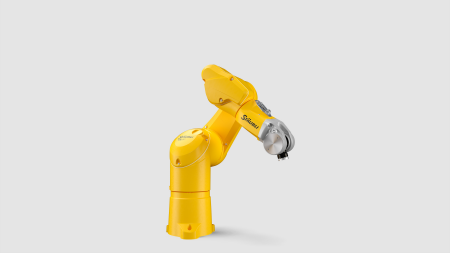- Europe
- Americas
- Asia and Middle East
- Africa and Oceania
SUCCESS STORY
Parts inspection with a twist
Czech manufacturer Kiekert produces around 180,000 motor vehicle locks per day. An intelligent robotic cell for in-line X-ray inspection, featuring a Stäubli TX60 six-axis robot, ensures the highest quality standards.
CUSTOMER BENEFITS
- In-line X-ray inspection for zero-defect production
- Highly flexible system technology
- Seamless documentation and traceability
- Effective alternative for managing a shortage of skilled workers
TASK
Robot-assisted X-ray inspection of vehicle locking systems
Kiekert is the world’s biggest manufacturer of automotive locking systems. At its largest plant in Prelouc, Czech Republic, a workforce of some 2,400 produces around 180,000 side door latches a day on 60 assembly lines.
Among the numerous automated assembly and testing tasks involved is the 100% inspection of soldered connections. A high-precision Stäubli robot has the job of manipulating the latches as they pass through a compact X-ray inspection cell.
The latest development in the design of these locking systems is the incorporation of convenience functions such as Kiekert’s proprietary Kiekert “Soft-Close” mechanism. As with all motor vehicle locks, the zero-defect principle applies. Consequently, the production engineers at Prelouc sought a way to subject the soldered connections in the plastic casing to 100% inspection.
SOLUTION
In-line X-ray inspection of soldered connections
On detailed analysis, it was determined that X-ray inspection would be the best technology for 100% inspection. A Czech company designed and built an inspection cell in which all handling tasks are performed by a compact Stäubli TX60 six-axis robot.
These include handling the test component during the inspection process in the X-ray chamber. The robotic gripper is designed to seal off the entry port to the chamber, thus preventing radiation leakage during the test. After the first X-ray image is recorded, the gripper rotates the latch 180 degrees and a second image is taken. Kiekert also wanted the capability to rotate the components in 5 and 10 degree increments – a requirement easily met by the high-precision TX60.
CUSTOMER USAGE
The self-learning test cell
The compact inspection cell includes a screen that clearly and unambiguously displays the test results, including the X-ray images. All measured values are documented and recorded for traceability. The testing process also has autonomous learning capabilities. If a soldering parameter is changed, for example, the test cell’s control unit can determine whether the change has had positive effects, based on the number of usable and defective parts.
Yet another beneficial feature of the robotic test cell is its flexibility. The system is able to test other parts, such as circuit boards that are soldered on an adjacent production line. Checking other parameters such as surface texture or completeness is possible without any issues.

